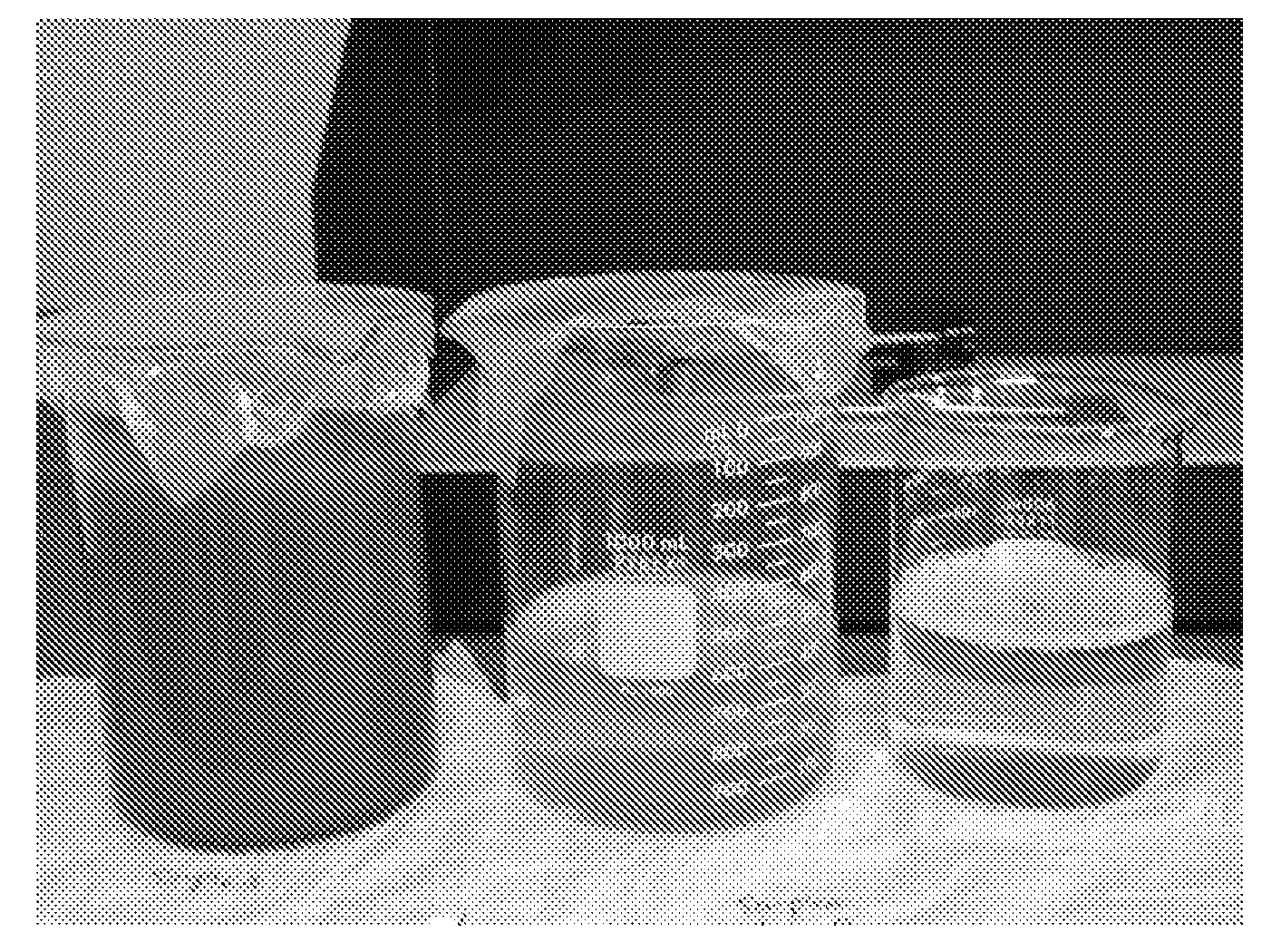Modified Biogenic Silica and Method for Purifying a Liquid
a biogenic silica and liquid purification technology, applied in the field of biogenic silica modification and liquid purification method, can solve the problems of reducing the cycle rate, high disposal cost, fine adsorbent powder particles, etc., and achieves the effect of improving the filtration or adsorption of biogenic silica
- Summary
- Abstract
- Description
- Claims
- Application Information
AI Technical Summary
Benefits of technology
Problems solved by technology
Method used
Image
Examples
examples
1. Color and Odor Removal from WW (Wastewater) Water
[0056]In this Example, the water to be treated is a car wash water with original turbidity 117 NTU, and over 500 PtCo color. After mixing with 5% modified rice hull ash (modified biogenic silica) for 10 minutes, and filtration with Whatman #2 filter paper, the turbidity of filtrate reduced to 10.7 NTU, and color was lowered to 131 PtCo. There was over 91% of turbidity and over 74% color removal. The original water had a strong NH3 odor. The odor was greatly reduced after treatment. A picture of water before (left) and after (right) treatment is shown in FIG. 1. The rice hull ash was modified by alternating 10 minutes 20% H2SO4 wash and 10 minutes DI water rinse for three times. After the treatment, the BET surface area was increased from 35 m2 / g to 65 m2 / g (about doubled or an increase of about 100%). The increased BET surface area indicates increase of adsorption capability.
2. COD Removal from Water
[0057]This Example involved a wa...
PUM
| Property | Measurement | Unit |
|---|---|---|
| Temperature | aaaaa | aaaaa |
| Temperature | aaaaa | aaaaa |
| Length | aaaaa | aaaaa |
Abstract
Description
Claims
Application Information
 Login to View More
Login to View More - R&D
- Intellectual Property
- Life Sciences
- Materials
- Tech Scout
- Unparalleled Data Quality
- Higher Quality Content
- 60% Fewer Hallucinations
Browse by: Latest US Patents, China's latest patents, Technical Efficacy Thesaurus, Application Domain, Technology Topic, Popular Technical Reports.
© 2025 PatSnap. All rights reserved.Legal|Privacy policy|Modern Slavery Act Transparency Statement|Sitemap|About US| Contact US: help@patsnap.com


